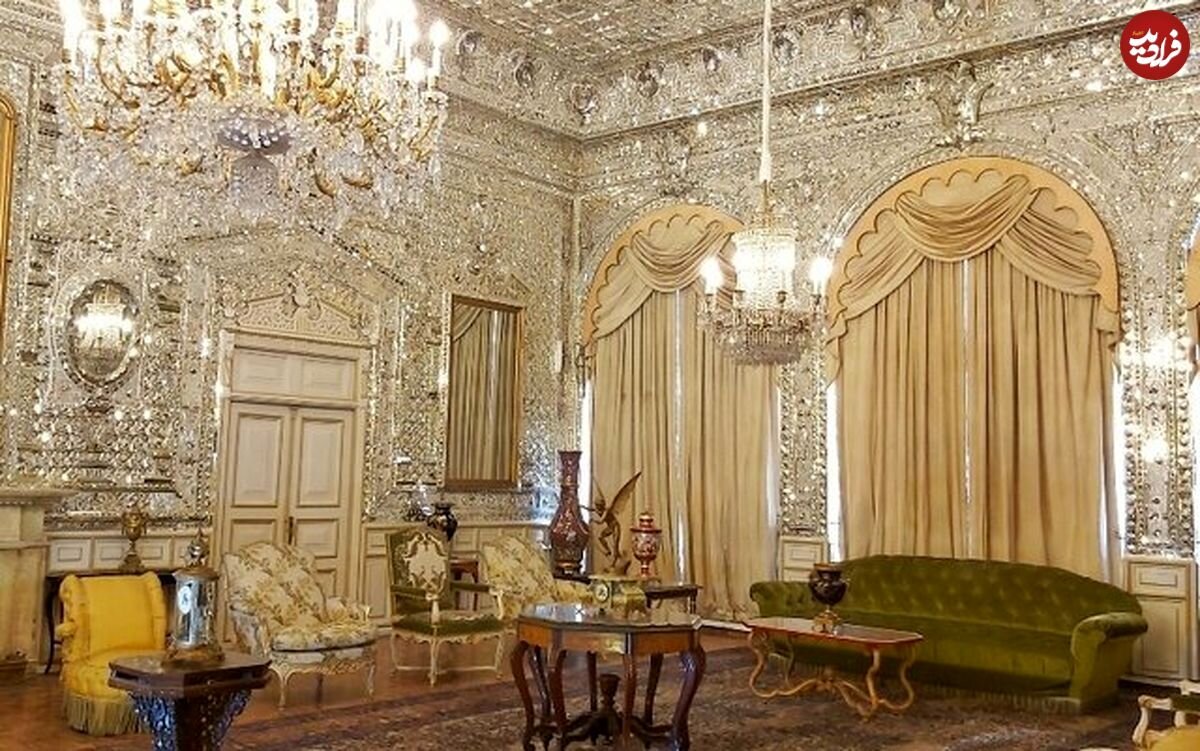Restorers find centuries-old tiles in UNESCO-listed palace

TEHRAN – A team of cultural heritage restorers has discovered some centuries-old tiles when they removed a wooden board from the floor of a closet in the UNESCO-designated Golestan Palace in downtown Tehran.
“During the restoration of Talar-e Brelian (Brilliant Hall), some old tiles were found beneath a closet. They once were used in the original architecture of this edifice before being collected in a subsequent renovation,” Afarin Emami, who presides over the World Heritage site, said on Tuesday.
Constructed upon the order of Naser al-Din Shah Qajar, Talar-e Brelian was named so for it was adorned by the brilliant mirror work handcrafted by proficient Iranian artisans.
“The tiles were found in a closet beneath an old wooden sheet of wood that covered the bottom,” the official said.
Explaining the finding, she said: There are two closets on the north side of Brilliant Hall, which were probably doors toward the inner part of the palace during the Qajar era. As old photographs suggest, later they were converted into closets the renovations conducted in Pahlavi epoch.
“During the restoration and repair of Brilliant Hall, we decided to restore all architectural decorations, stucco and other decorations without any change in the originality of the building.”
“When we commenced restoration of the hall, by examining its closets, we noticed that there were wooden boards on the floor, which was obviously added during the repairs and changes of the Pahlavi era,” she said.
Some of these wooden boards were broken and because they were not strong enough to arrange things, they had to be repaired. “When we pull them out for restoration, a missing part of the hall’s architecture appeared.”
“Inside these closets, we found a number of tiles which previously embellished the floor of the hall during the Qajar period,” the official said.
Emami noted that unfortunately, the tiles found inside these closets were very damaged and we repaired them on an urgent project.
An interesting thing to note is that these tiles are exactly the same as what [Iranian painter] Abu’l-Hasan Khan drew in her painting of Brilliant Hall, she said.
Highly decorative glazed tiles, better known as Haft Rang Persian Tiles, were originally made to adorn the exterior and interior of secular and religious buildings. Those tiles first came to prominence in the late 15th and 16th centuries when artists frequently chose to decorate them with painted designs showing plants, birds, people and calligraphy.
Because the Haft Rang tiles were directly plastered onto the walls, in comparison to mosaic faience, they were more prone to damage over time. This technique lasted until the Qajar dynasty (1789-1925) but slowly faded into the background during the later years of this period.
Although the name of this technique is Haft Rang, it does not necessarily mean that all seven colors are used in every tile piece or even in the entire composition, although in some cases it does. can happen. Some of the main colors used in this technique are black, white, turquoise, yellow, pastel pink, and cobalt blue.
Golestan Palace once served as the official residence of Qajar monarchs who ruled Persia (Iran) between 1789 and 1925. It exemplifies architectural and artistic achievements of the Qajar epoch, as well as an introduction of European motifs and styles into Persian arts.
Experts say it displays a remarkable mixture of ancient Persian and contemporary European architectural styles, which characterized much of Iranian art in the 19th and 20th centuries.
The property embodies a successful integration of earlier Persian crafts and architecture with Western influences. Over the past two centuries, it became a center of arts and architecture, a source of inspiration for Iranian artists and architects to this day.
Currently, the complex consists of eight key palace edifices mostly used as museums and the eponymous gardens, a green shared center of the complex, surrounded by an outer wall with gates.
AFM
Leave a Comment